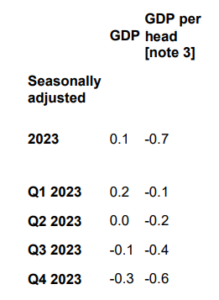As the UK emerges from news of the spring statement, with promises of boosts to the film industry and money invested in creative industries, lots of people will be wondering if they can really monetise their passion. The hard truth is it is very hard. As a creative professional, you might find that your industry is affected more than most by funding cuts – if it ever had funding to begin.
The arts sector is struggling at the moment, but that’s not a reason to let go of your dreams. Whether your talents lie in writing, speaking or performing (or something else entirely), now is the time to think outside the box.
After all, people are what make the creative industries tick – and it’ll be people that are integral to rebuilding these industries in the months to come.
Read on for a few ideas on where to find work as a creative professional, whether you’re a musician, producer, artist or creative consultant…
What is a creative professional?

It’s a broad definition. For the purposes of this article, though, we’re thinking about work opportunities for actors, TV and film execs, musicians, and arts consultants. Creative professionals include anyone on the back end of productions, such as sound engineers, as well as actors, musicians, or singers.
You don’t have to have previous experience to call yourself a creative professional. Once you start looking for creative work, that’s what you are! Having some experience under your belt – even local amateur theatre, busking, or local radio internships – can all help you find work. Tenacity is the key to getting work as a creative, though, so keep trying even when things seem hard.
If you’re an actor
With theatres closed and shooting for TV and film either on pause or difficult because of social distancing, there’s no doubt that times are tough for actors. This might be a good time to think about voiceover work, which you may be able to do remotely or via social distancing in a studio. Lots of actors use voiceover work to supplement their income. It could be a great option at the moment.
This also might be a great time to work on your craft. Think about whether there are online courses you can take to improve your skills, or other parts of the industry that you can get an insight into. Need to work on your audition technique? Been meaning to get your showreel in order? Considered screenwriting but never really looked into it? Now is the time.
Look at your online options, too. Maybe you can teach younger children some dramatic techniques, or run a workshop for budding actors who want to learn about auditioning tactics. You could also use your time to add to a video showreel: lots of productions will be casting virtually in the coming months.
Of course, you need to be able to pay the bills too. But if you can, use whatever free time you have whilst studios are closed or quiet to build your offering. You’ll only thank yourself further down the line.
as a producer
As a creative producer, whether that’s in TV, film or audio, now is the time to think ahead to your future projects. If you’re in TV or film, could you use this time to research? To look for stories that could potentially be turned into projects for the screen? What about putting together ideas for your own streaming production?
If you’re an audio producer, make it clear that you’re available to work with production companies on new or upcoming podcasts. You’re lucky that, in your area, production can take place remotely. It’s not the case for many sectors of the arts industry, so take advantage.
With more businesses staying online and remote, there’ll be a boom in corporate productions, too. Take advantage of this and tout for work around local businesses – both for video and audio production. You could also consider teaching an online workshop or course to help others break into audio or video production roles.
If you’re a musician

Remember back in the noughties, when pop stars found their following on social media and ended up at the top of the charts for weeks on end? Bear with us – we’re not suggesting you upload your music to TikTok and try and hope an army of teenagers will find you. Although, if you do want to try that definitely feel free…
The lesson that we can take from Lily Allen et al, though, is one of ingenuity. If you’re currently unable to get in the studio, and whilst live venues are still closed, why not think about refining your brand? This is a good time to think about your audience and how you target them, and come up with inventive ways that you might be able to reach new people. It’s never too early to start thinking about where you see yourself in the future. It’s not too early to start thinking about pitching yourself for next year’s festivals, either…
You could also think about selling your existing music to advertising agencies for use in adverts. What about TV or film companies, for use in soundtracks or within their productions? You could earn some serious money here. Licensing is a big money-maker for musicians of all types, so you shouldn’t feel like you’re selling out.
as an arts consultant
If you work within the arts as a consultant, you’re in a good position at the moment. Live events that need your expertise might not be happening at the moment, but as Glastonbury’s Emily Eavis recently mentioned, it’s now time to start thinking about next year. After a year off, next year’s live events are likely to be bigger and better than ever. You can use your skills: extra planning and help will be needed as the arts return (hopefully with vigour) in 2021.
Added to that is the reality that many arts venues and organisations are going to be struggling for the next few months. Whether it’s with staff, restructure, finances or creative ideas, there are going to be numerous outlets for your expertise. Whatever your niche, make it clear now you’re available to help creative professionals save their organisations and weather the coronavirus storm.
Where to get funding as a creative professional
As a creative professional, there are various opportunities for funding. You don’t need to do everything on your own. Organisations that you should look into include
- The Arts Council – the big one, offering funding for numerous organisations across the sector
- Art Fund – funding for museums and galleries
- Trust for London – funding for work in the capital, with the aim of “creating a fairer London” and alleviating poverty
- The British Council – funding for the creative sectors
- Nesta Arts Impact Fund – public, private and charitable funding that aims to “demonstrate the potential and impact of social investment in the arts”
Are you a creative professional who has started a new project during the coronavirus lockdown? We’d love to hear about it – let us know over on the forums.
Now read:
Need more creative ways to make money? Read these!
The post How to Get Work As a Creative Professional appeared first on MoneyMagpie.
Labels: News













